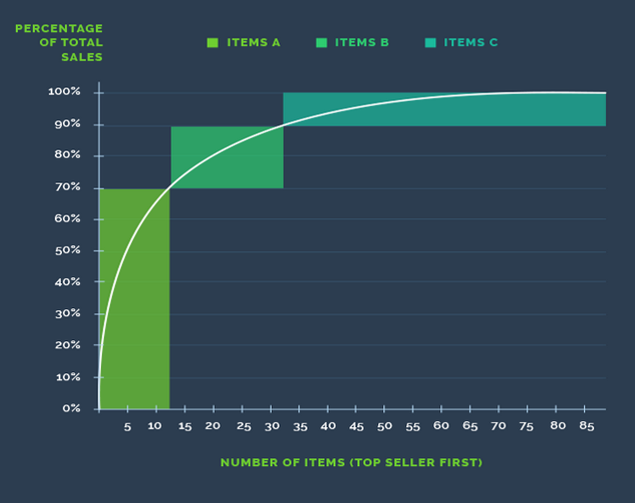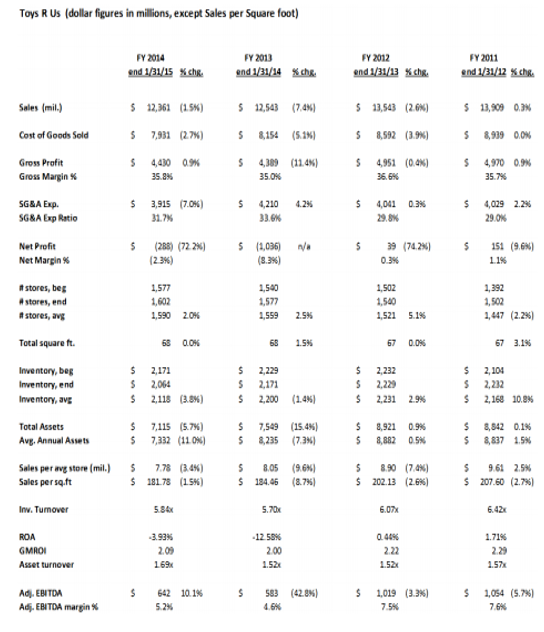Introduction
Toys R Us is one of the major toy manufacturers in the world. It operates using a supply chain that has been associated with various challenges. It is currently the only specialised major toy manufacturer in the United States, with Wal-Mart and Target as its major competitors. The company has had a series of shortages of products in its stores across the world, a situation that has led to client disappointment.
The management of the company has expressed concerns over the latest trend, with a new chief executive being appointed to try to turn around the situation. Apart from running short of supplies, Toys R Us has also experienced stagnant profit margins, which hamper the company’s prospects. Another major challenge that Toys R Us faces is seasonality. Hence, business is only at the peak for the company during the holidays. It goes off-peak for the rest of the year.
Seasonality poses a grave challenge for Toys R Us because of its lack of product flexibility. Product flexibility refers to the ability of a company to change from supplying one product to another depending on market demand. Toys R Us is fully specialized in the toy industry. The business may not easily leave this line of production, unlike its major competitors such as Wal-Mart and Target. Flexibility is one of the five operations objectives of any supply chain. This paper will analyze the literature review in the field of logistics network with reference to the operations strategy. Additionally, it will analyze the case study of Toys R Us in light of the shortage of stock that has recently affected its major stores across the world.
Literature Review
Toys R Us Company is not new to being unable to meet clients’ demand for its products. This company has always had more orders than it can meet at a given time to the extent of leading to customer frustration. Its competitors have also used this gap to gain an edge at the toy giant. Supply Chain Digest (2006) reports how the Christmas of 1999 saw Toys R Us fail to meet the overwhelmingly high demand for orders made online via the company’s retail website.
Dependability is a major trait that cannot be traded off, especially by big businesses such as Toys R Us. Although the inventory was in place, Toys R Us was incapable of packing and delivering those orders fast enough (Supply Chain Digest 2006). Customers who feel let down by not receiving their deliveries may simply move to another retailer. This trend is dangerous for any supplier. Kapner (2015) observes that Toys R Us is still grappling with running out of stock during peak seasons. This statement is an insight into Toys R us’ long-term problem with falling below with supplies especially when it matters most.
Chopra and Meindl (2007) describe a supply chain as all stakeholders who take part in satisfying a customer’s order. This definition points to the fact that supply chains involve several decision-makers who are given a certain degree of complexity. Chopra and Meindl (2007) identify six major components that mark supply chain success. Such elements comprise transport, facilities, inventory, information, sourcing, and pricing.
The literature by Chopra and Meindl (2007) has also provided a framework for analyzing this type of business that first takes into account its competitive strategy. Other important elements include the operational strategy and/or its relation with each of the above factors (drivers). A company that is ultimately interested in its sustainability must employ a competitive strategy that takes into account all the six drivers listed above (Chopra & Mendl 2007).
Hassini, Surti, and Searcy (2012) argue that the issue of sustainability in the manufacturing sector may be explained by taking into account two factors. The first factor is the fact that operations research has been limited to production and manufacturing topics, a piece of knowledge that any sustainable chain research must depend on. Hassini, Surti, and Searcy (2012) have supported this view by arguing that companies that rely on lean manufacturing strategies stand a greater chance of adopting sustainable practices.
This point of view will be important in this discussion since it contradicts Toys R Us’s decision to focus on the “bulk strategy” as a counter-strategy to its competitors’ lean strategies. Kapner (2015) provides a report that recommends the Toys R Us Company’s management to adopt a strategy of filling up the shelves as a way of addressing the current challenge of running out of stock from time to time.
Holweg and Helo (2014) deliberate over whether there is a need for a change of terminology used in supply chain management. The basis of Holweg and Helo’s (2014) concerns is that the supply chain field has evolved with time similar to any other field of academia. Barney (2012) advances this latter argument. Among the concerns in literature is the question of supply chain vs. value chain. The phrase ‘supply chain’ was intended to have an operational connotation.
According to Holweg and Helo (2014), the two originators of the term, Oliver and Webber, told firms to control the entire supply chain records. This approach to chain stores remains to date, with the focus being on ensuring stability and efficiency. The value chain addresses the creation of worth across various firms as an alternative approach to the logistics network. However, the two terminologies may seem synonymous, although the latter is inclined toward value as opposed to quantity.
“Value grid” and “value constellation” are some of the terms used to imply value creation. Some scholars such as Barney (2012) are of the view that value creation is a prudent move for businesses to go out of the linear approach to managing chain supplies. The linear approach is whereby the manufacturer does all the production work before supplying the finished goods to the retailers. This plan is adopted when value creation across the supply chain is limited.
Stadtler and Kilger (2007) discuss the importance of demand planning and control in supply chain management. Demand planning and controlling may be termed as the ability to use forecasting to determine the status of the demand for a certain product at a future date. A quality demand plan is important since manufacturers rely on it when deciding the volume of goods to produce for the market. A good demand plan must possess several characteristics. The first aspect is the summability. Summability means that the demand plan has a positive domain. Secondly, all the key fields that are necessary for computation must be available for efficient determination. Lastly, it should be possible to obtain the buy-in of all concerned departments within an organization (Stadtler & Kilger 2007).
Slack and Lewis (2011) observe that technology has a great impact on all business operations. This claim is also true for supply chains. Lim (2016) concurs with this view by arguing on the need for chain stores to adopt modern technology in their operations, especially in monitoring the movement of products. Failure to adjust to new technology trends has often cost many businesses dearly, especially where their competitors are quick enough to join the course.
A good example is how fellow mobile phone manufacturers drove Nokia out of the market for failing to adapt quickly to technology trends (Weber & Scuka 2016). Lim (2016) proposes the integration of product segmentation as a way of monitoring the inventory in supply chain management (Lim 2016). Inventory software organizes items according to the demand and/or how fast the selling takes place.
Lim (2016) also points to the importance of maintaining an active online platform for customers who wish to purchase online. Additionally, Lim (2016) warns buyers about the likely repercussions of poor planning when it comes to online shopping. For instance, most major online retailers offer free online shipping to customers who buy products online. This good incentive is likely to drive the sales up. As shown in the Appendix, the company’s sales have been below the expected standards.
The shipment costs may be too high to the extent of cutting into the profits of the company. Lim (2016) proposes an increase in the shipping threshold as a way of minimizing distribution costs. This plan ensures that customers get the incentive to buy a company’s products. It also increases the average order value. Additionally, the company can compensate itself for the shipping cost (Lim 2016).
Case Study: Toys R Us Supply Chain
Toys R Us is one of the major toy companies in the world. Recently, the company has been in the news concerning the acute shortage of supplies for toys. Such shortages were witnessed during the holidays in its major stores. The situation has caused frustration among customers, including panic for the management of Toys R Us. Kapner (2015) asserts that this trend of failing to meet demand is not new for Toys R Us. A 2006 report by Supply Chain Digest (2006) provides an incident from Christmas of 1999 where the company was overwhelmed by high demand for children’s toys. It was unable to meet all the online orders made at the time.
One of the major effects of running out of stock for any major retailer is customer frustration. Kapner (2015) reveals the last year’s (2015) Black Friday where most of Toys R Us stores had only 62% of the 100 types of toys. This figure is far below the recommended 95% stock for peak seasons (Kapner 2015). The effect that this situation may have includes damaging a company’s reputation. Frustrated customers who fail to find the desired product will look for products from competitor firms.
There is no assurance that such customers will come back to the former company later. Toys R Us has observed this scenario with growing concern. In 2014, the company undertook several actions to address the main challenge bedeviling the business. The actions included reducing staff members and closing various stores to prevent further loss of revenue (Muller 2014). Such a response could not solve the underlying problem, namely, failing to deliver the company’s promise of offering the best assortment at competitive prices to the customers.
Toys R Us operates three main businesses in the US. The businesses deal with toys, baby products, and video games. The three entities have not fared well in the last couple of years as shown in Figure 1 below.

This situation places the company in a vulnerable position with respect to its competitors. Toys R Us’s two major competitors include Target and Wal-Mart. These companies are flexible, owing to their ability to use toys as loss leaders during the low seasons (Muller 2014). Hence, the two companies can rely on toys to attract customers to whom they sell other products. This plan is almost impossible for Toys R Us, which must look for alternative ways to drive its profits up during the off-peak seasons.
This gain of advantage by the two competitors means that they remain in business during peak and off-peak seasons. On the contrary, for Toys R Us, business only booms during the high season such as during holidays. This observation may likely explain its inability to produce adequate products to offset the demand during this season. Baulch (2015) asserts that the lack of flexibility for Toys R Us places it at a point of a disadvantage compared to its two main competitors. Baulch (2015) further reveals that it will be difficult for Toys R Us to produce another product if the toy market collapses. This finding is not the case for Target and Wal-Mart.
Analyzing Toys R Us’ Supply Chain
Before the arrival of the new Chief Executive, David Brandon, Toys R Us’ stores were considered stocked whenever three of any particular items were in stock. This situation posed a major challenge, especially where a customer would buy all three items at once. Customers find half-empty stores repulsive. They often get the feeling that they are purchasing leftovers (Thomison 2016). It is surprising for a company that specializes only in toys to have difficulty filling the shelves of its stores. This situation may be attributed to poor management of stock or failure to monitor market demand properly. Toys R Us has been described as a “dying industry” because of its stagnant profit margins when compared to the growing margins of its counterparts, namely, Target and Wal-Mart.
This culture of under-stocking most of its stores seems to be what Mr. Brandon sought to reverse on his arrival at the company. Toys R Us has recently announced the decision to adopt the “bulk” strategy in contrast to its competitors’ lean strategy. Mr. Brandon announced this move as a proposed solution to the out-of-the-stock challenge that has come to be the norm for the toy company. However, analysts such as Kapner (2015) question the suitability of this approach, especially in a world where quality is increasingly becoming relevant. Paul Berberian of Sphero Inc. asserts, “Toys R Us is artificially based on the pound” (Kapner 2015), alluding to the ‘bulk strategy’ that the company has proposed to adopt. Nevertheless, data is not available to indicate whether increasing the bulk in the Chain stores will have a direct impact on quality.
Recommendations and Conclusion
As revealed in the paper, Toys R Us needs to take several measures to turn around the predicament that has befallen the company for a long time. It is worth noting that the ‘bulk strategy’ may not be the most suitable response to this current trend, especially given that the competitors have adopted the lean strategy. The stores may be full. They may fail to meet the specific demands of customers. Lim (2016) observes that the presence of internet marketing renders full shelves inadequate to address the problem of stock shortage.
Online retailers such as Amazon are receiving increasing numbers of online shoppers. This trend is likely to grow in the future. Toys R Us should also focus on online selling as a strategy to attract more customers. Kapner (2015) and Lim (2016) observe that Toys R Us has not fared well in online marketing. The company should look to tap into this potential, instead of focusing solely on filling the shelves.
Lim (2016) also suggests the need for product segmentation as a solution to the acute shortage witnessed at Toys R Us’ stores. Product segmentation refers to a strategy that will focus on managing the stock-keeping units (SKUs). Various algorithms can be employed to manage stock in a company efficiently. For instance, product segmentation allows a supplier to determine the best and lowest sellers among the stocked products as shown in Figure 2.

It may also help in predicting future market trends. As the seller of an assortment of products, Toys R Us should focus on identifying the demand for each product. This strategy will inform the major decisions such as production and stocking, although not all items can have the same demand at a given time.
References
Barney, J 2012, ‘Purchasing, supply chain management and sustained competitive advantage: The relevance of resource-based theory’, Journal of Supply Chain Management vol. 48, no. 2, pp. 3–6.
Baulch, J 2015, Crunch year for Toys R Us with manufacturers hoping for a turnaround. Web.
Chopra, S & Meindl, P 2007, Supply Chain Management: Strategy, Planning, and Operation, Prentice-Hall, Upper Saddle River, NJ.
Hassini, E, Surti, C & Searcy, C 2012, A literature review and a case study of sustainable supply chains with a focus on metrics’, International Journal of Production Economics, vol. 140, no. 1, pp. 69-82.
Holweg, M & Helo, P 2014, ‘Defining value chain architectures: Linking strategic value creation to operational supply chain design’, International Journal of Production Economics, vol. 147, no. 1, pp. 230-238.
Kapner, S 2015, Struggling Toys ‘R’ Us tries fuller stores.
Lim, V 2016, Toys “R” Us: How out-of-stock situations are killing the toy giant.
Muller, L 2014, Toys ‘R’ Us has major problems.
Slack, N & Lewis, M 2011, Operations strategy, Pearson Education Limited, London.
Stadtler, H & Kilger, C 2007, Supply chain management and advanced planning, Springer, New York, NY.
Supply Chain Digest 2006, The 11 greatest supply chain disasters. Web.
Thomison, E 2016, A strategic marketing and financial analysis of Toys R Us. Web.
Weber, A & Scuka, D 2016, ‘Operators at crossroads: Market protection or innovation?’, Telecommunications Policy, vol. 40, no. 4, pp. 368-377.
Appendix
